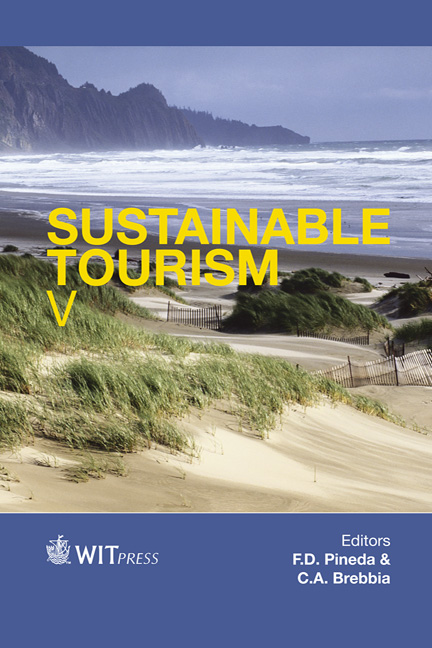Proposing Strategies For A Sustainable Tourism: A Case Study Of El Sargento And La Ventana, BCS, Mexico
Price
Free (open access)
Transaction
Volume
161
Pages
9
Page Range
17 - 25
Published
2012
Size
3,062 kb
Paper DOI
10.2495/ST120021
Copyright
WIT Press
Author(s)
C. Lauterio, J. Urciaga & O. Arizpe
Abstract
The effects of tourism on economic, social, environmental, institutional and spacial structures by nature require an analysis that focuses on a systematic perspective. This identifies areas of regional development based on a central strategy to develop a sustainable tourism with solutions based on possible economic requirements. Tourism has been known to provide growth in the global financial system, as the result of the relationship between a country and its regions. Therefore, the main goals of this analysis are: the first is based on the characterization of the Area of Study (AS); the second is focused on the population growth and the transformation of the economic activities in the AS, as a consequence of tourism; the third is orientated on proposed strategies to develop sustainable tourism in the area embraced by local characteristics found in the AS to be beneficial to the social sector. So far this study has proven it is feasible to adopt sustainable tourism with the proper use of natural resources and local community involvement. Keywords: sustainable tourism, development, community involvement. 1 Introduction Tourism is the world’s largest and fastest growing industry. It has the potential to contribute significantly to the economic development of most countries, including those regions that are less developed and more peripheral. However, it depends heavily on environmental conditions, whether natural or man-made, for its market and its sustainability (Tisdell [1]). Community-based approaches are
Keywords
sustainable tourism, development, community involvement.





